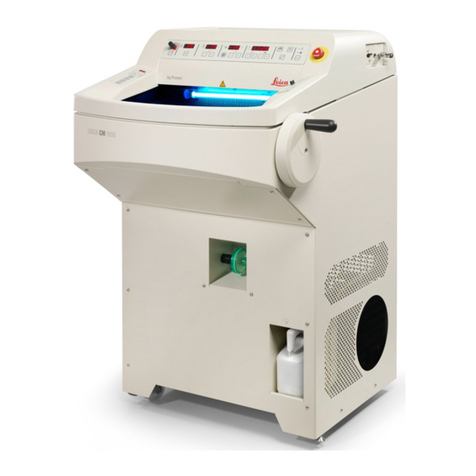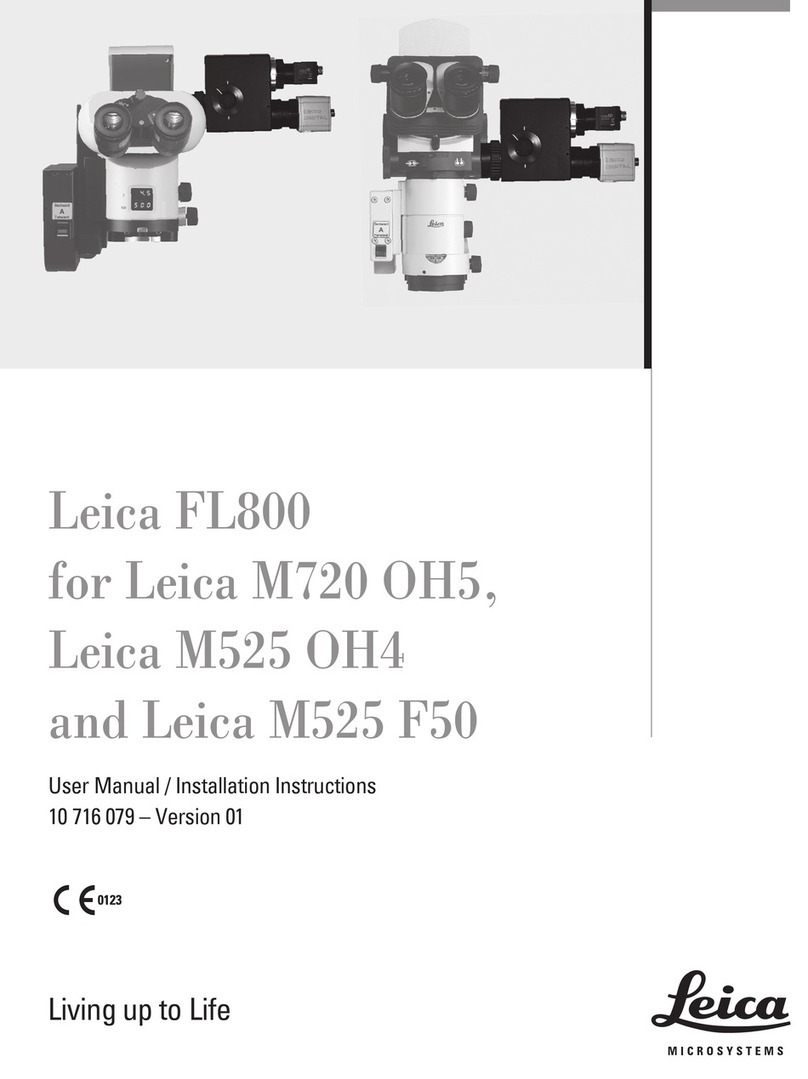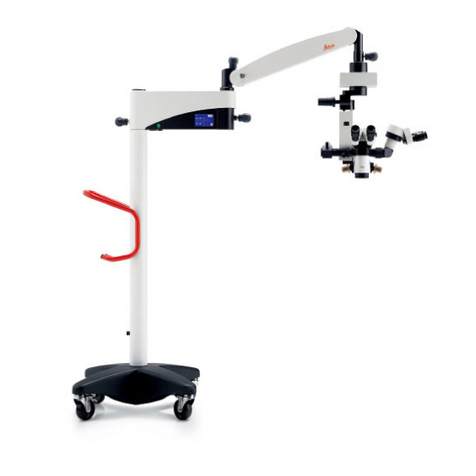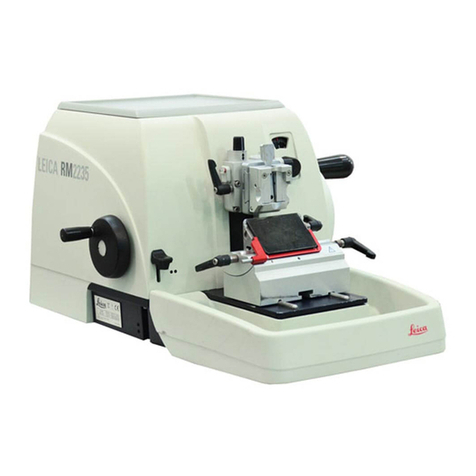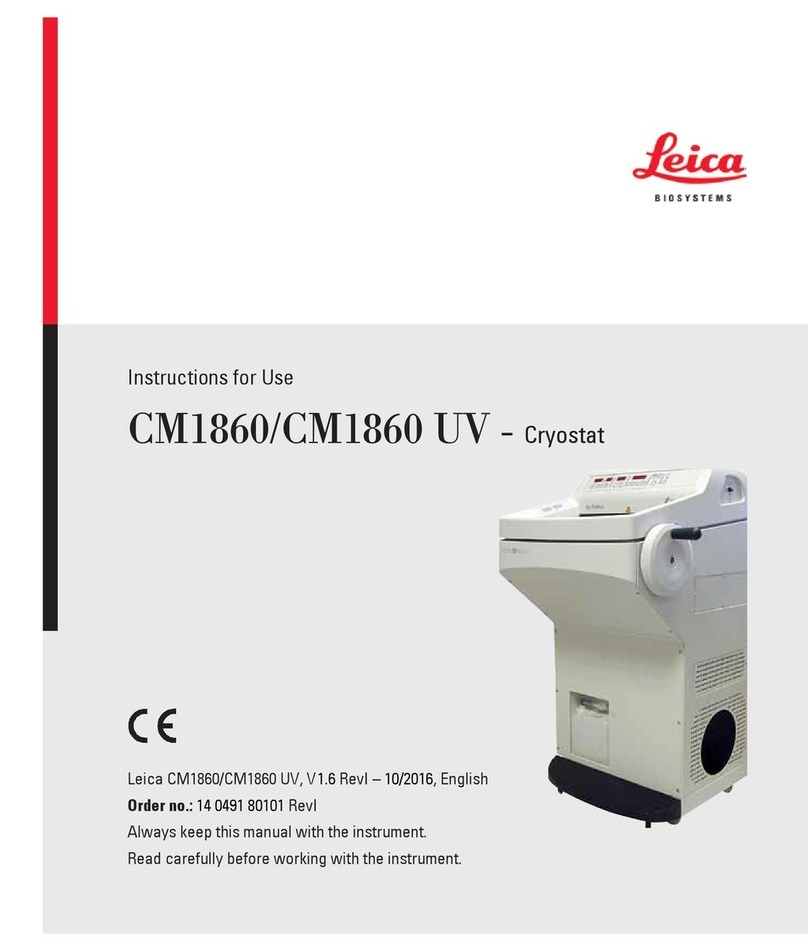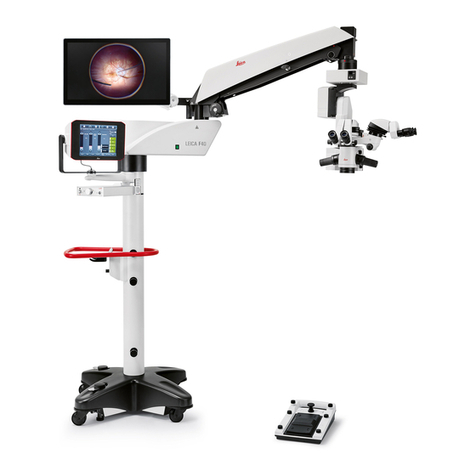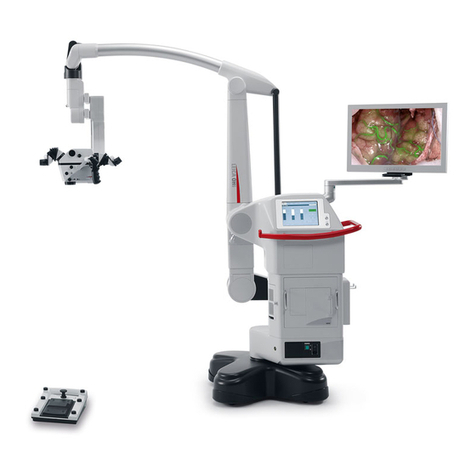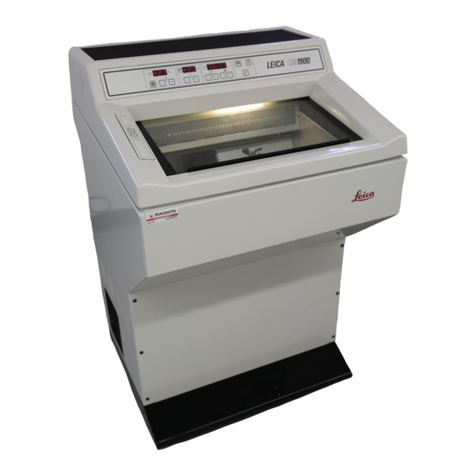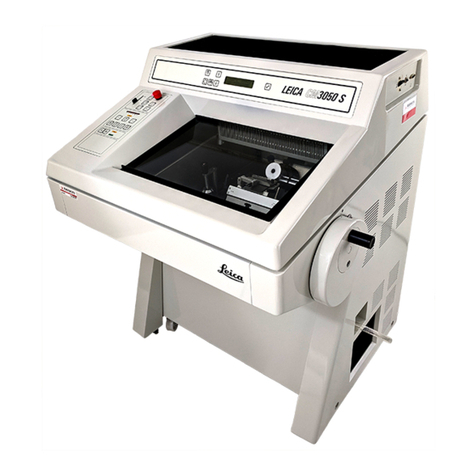3
Leica SM2000 R – Sliding Microtome
1. Important information
Serial No. ...................................................................
Year of manufacture ................................................
Manufactured in: .. Federal Republic of Germany
The model, serial number and year of manufacture are
specified on the nameplate on the left of the instru-
ment.
Leica Biosystems Nussloch GmbH
Heidelberger Str. 17-19
D-69226 Nussloch
Germany
Telephone: 0 62 24/143-0
Telefax: 0 62 24/143-200
Homepage: http://www.histo-solutions.com
The information, numerical data, notes and value judg-
ments contained in this manual represent the current
state of scientific knowledge and state-of-the-art tech-
nology as we understand it following thorough investi-
gation in this field. We are under no obligation to up-
date the present manual periodically and on an ongo-
ing basis according to the latest technical develop-
ments, nor to provide our customers with additional
copies, updates etc. of this manual.
For erroneous statements, drawings, technical illus-
trations etc. contained in this manual we exclude li-
ability as far as permissible according to the national
legal system applicable in each individual case. In par-
ticular, no liability whatsoever is accepted for any fi-
nancial loss or consequential damage caused by or
related to compliance with statements or other infor-
mation in this manual.
Statements, drawings, illustrations and other informa-
tion as regards contents or technical details of the
present manual are not to be considered as warranted
characteristics of our products. These are determined
only by the contract provisions agreed between our-
selves and our customers.
Leica reserves the right to change technical specifi-
cations as well as manufacturing processes without
prior notice. Only in this way is it possible to continu-
ously improve the technology and manufacturing tech-
niques used in our products.
This document is protected under copyright laws. Any
copyrights of this document are retained by Leica
Biosystems Nussloch GmbH.
Any reproduction of text and illustrations (or of any
parts thereof) by means of print, photocopy, microfiche,
web cam or other methods – including any electronic
systems and media – requires express prior permis-
sion in writing by Leica Biosystems Nussloch GmbH.
For the instrument serial number and year of manu-
facture, please refer to the name plate at the back of
the instrument.
© Leica Biosystems Nussloch GmbH






